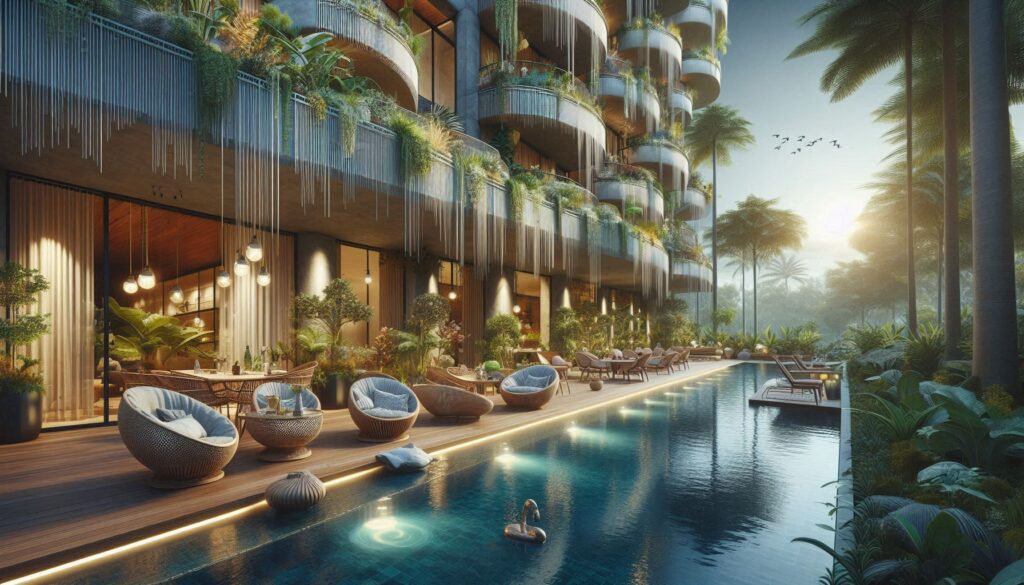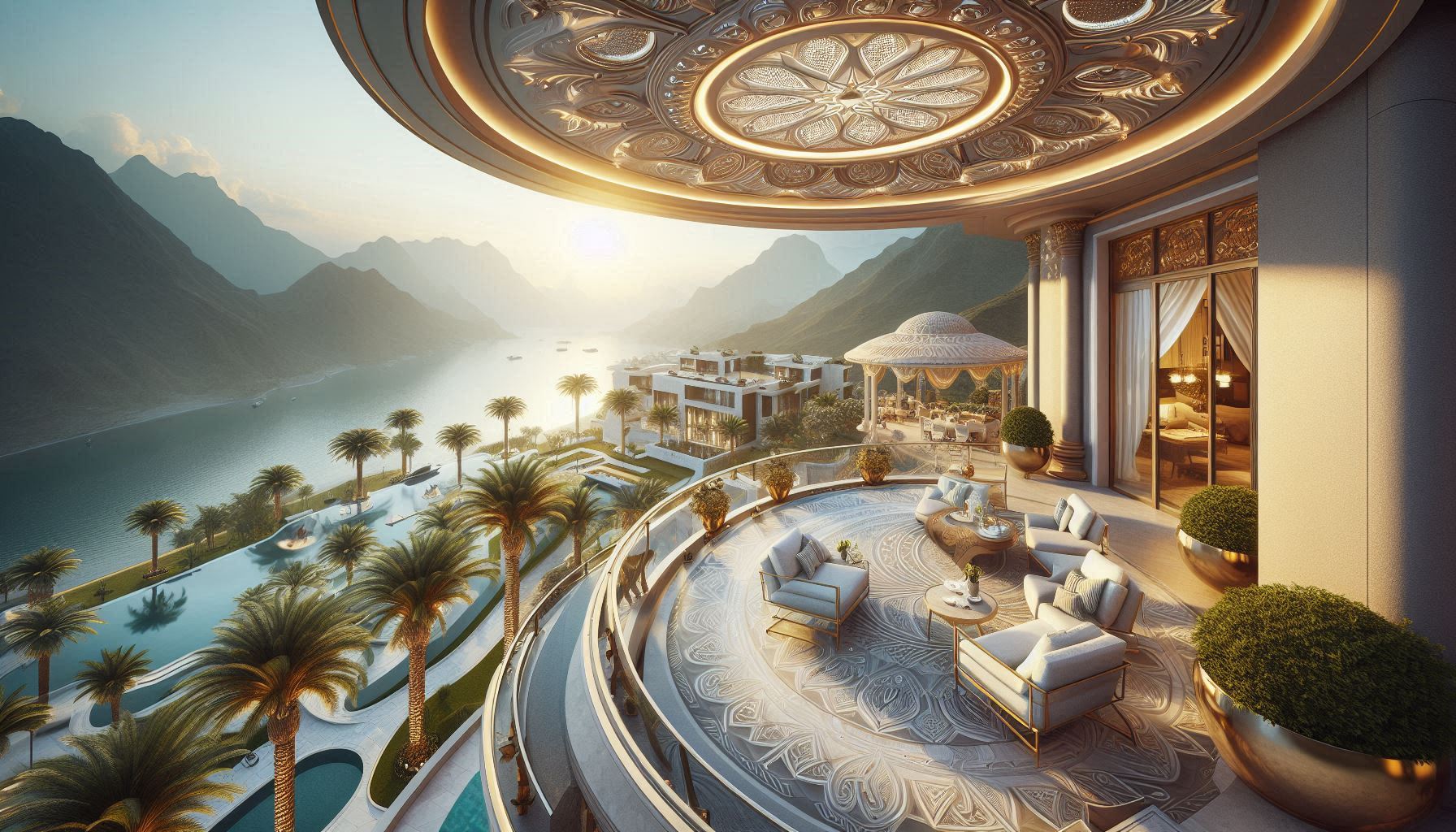In the realm of architecture and urban design, decorative terraces stand as picturesque retreats that blend aesthetic charm with functional outdoor spaces. From residential rooftops and luxurious penthouses to public venues and commercial settings, these elevated platforms offer a unique opportunity to enhance living environments, promote social interaction, and provide a respite from the bustling city below. This article delves into the allure of decorative terraces, their design considerations, landscaping elements, and inspirational examples that showcase their transformative impact on contemporary urban living.
Introduction to Decorative Terraces
Decorative terraces represent an extension of indoor living spaces into the outdoors, characterized by their architectural design, landscaping features, and decorative elements. Unlike traditional balconies or patios, terraces typically feature elevated platforms that may span across multiple levels or integrate with existing structures, offering expansive views, privacy, and opportunities for personalized aesthetics.
Historical and Cultural Significance
Terraces have a rich historical and cultural significance, dating back to ancient civilizations such as the Hanging Gardens of Babylon and the terraced fields of Asia and South America. In modern times, terraces have evolved from functional agricultural landscapes to sophisticated outdoor living spaces that reflect architectural trends, environmental consciousness, and the desire for sustainable urban development.
Design Considerations for Decorative Terraces
1. Structural Integrity and Safety:
Before designing a decorative terrace, structural engineers must ensure that the underlying structure can support the additional weight of landscaping materials, furniture, and human activity. Factors such as wind loads, seismic considerations, and waterproofing are crucial for ensuring safety and longevity.
2. Architectural Integration:
Terraces should harmonize with the architectural style and materials of the surrounding buildings or landscapes. Integration with interior spaces, façade treatments, and access points (e.g., staircases, elevators) enhances functionality and visual continuity.
3. Landscaping and Greenery:
The selection of plants, trees, and landscaping elements plays a pivotal role in defining the ambiance and character of decorative terraces. Considerations include climate suitability, maintenance requirements, water efficiency, and aesthetic cohesion with the overall design theme.
4. Privacy and Seclusion:
Providing adequate privacy and seclusion on decorative terraces enhances comfort and relaxation for occupants. Design elements such as pergolas, trellises, planters with tall shrubs, and strategic placement of furniture can create intimate spaces within larger outdoor settings.
5. Outdoor Furniture and Accessories:
Choosing durable, weather-resistant furniture and accessories enhances the usability and visual appeal of decorative terraces. Options include lounge seating, dining sets, fire pits, umbrellas, decorative lighting, and sculptures that complement the design theme and accommodate various activities.

Landscaping Elements for Decorative Terraces
1. Green Walls and Vertical Gardens:
Vertical gardens and green walls utilize vertical space to introduce vegetation, improve air quality, and create a lush backdrop for decorative terraces. Irrigation systems and plant selection are tailored to maximize growth and minimize maintenance.
2. Water Features:
Water features such as fountains, ponds, or cascading waterfalls add a soothing ambiance to decorative terraces while attracting wildlife and providing natural cooling effects. Considerations include water circulation, filtration, and integration with surrounding landscaping.
3. Paving and Flooring:
Paving materials such as natural stone, porcelain tiles, wood decking, or composite materials define the aesthetic and functional characteristics of decorative terraces. Slip resistance, durability, and ease of maintenance are key factors in selecting suitable flooring options.
4. Lighting Design:
Effective lighting design enhances the usability and ambiance of decorative terraces during evening hours. Options include overhead string lights, pathway illumination, spotlights for highlighting plants or architectural features, and integrated LED fixtures that enhance safety and visual interest.
5. Climate Control and Comfort:
Incorporating shade structures, retractable awnings, pergolas with adjustable louvers, or outdoor heaters extends the usability of decorative terraces throughout the year. Considerations for airflow, ventilation, and thermal comfort optimize outdoor living experiences.
Inspirational Examples of Decorative Terraces
1. The High Line, New York City, USA:
A linear park built on a historic freight rail line elevated above the streets of Manhattan, featuring landscaped gardens, seating areas, art installations, and panoramic views of the cityscape.
2. Marina Bay Sands SkyPark, Singapore:
An iconic rooftop terrace atop the Marina Bay Sands hotel, offering infinity-edge swimming pools, lush gardens, observation decks, and sweeping views of Singapore’s skyline and waterfront.
3. Villa d’Este, Lake Como, Italy:
A historic villa renowned for its terraced gardens overlooking Lake Como, featuring elaborate Renaissance-era fountains, sculptures, and meticulously manicured landscapes.
4. Thames Barrier Park, London, UK:
A waterfront park with terraced gardens along the River Thames, showcasing modern landscape design, outdoor art installations, and recreational amenities for local residents and visitors.
Sustainability and Future Trends
1. Green Roof Technology:
Integrating green roofs and eco-friendly building materials reduces urban heat island effects, improves energy efficiency, and promotes biodiversity in urban environments.
2. Smart Irrigation and Water Management:
Implementing IoT (Internet of Things) sensors and weather-based irrigation systems optimize water use efficiency and reduce maintenance costs for decorative terraces.
3. Community Engagement and Wellness:
Designing multi-functional terraces that accommodate social gatherings, cultural events, educational programs, and wellness activities fosters community cohesion and promotes public health.
4. Biophilic Design Principles:
Incorporating biophilic design elements, such as natural light, views of greenery, and sensory experiences of nature, enhances occupant well-being and connectivity with outdoor environments.
Decorative terraces exemplify the convergence of architectural innovation, environmental stewardship, and human-centric design principles in urban landscapes. By transforming underutilized rooftop spaces into vibrant sanctuaries for relaxation, recreation, and social interaction, these elevated gardens elevate the quality of urban living while promoting sustainable practices and cultural enrichment. As cities evolve to meet the challenges of population growth, climate change, and urbanization, decorative terraces serve as inspiring examples of how thoughtful design and landscaping can harmonize with nature, nurture community spirit, and create enduring legacies within the urban fabric.

